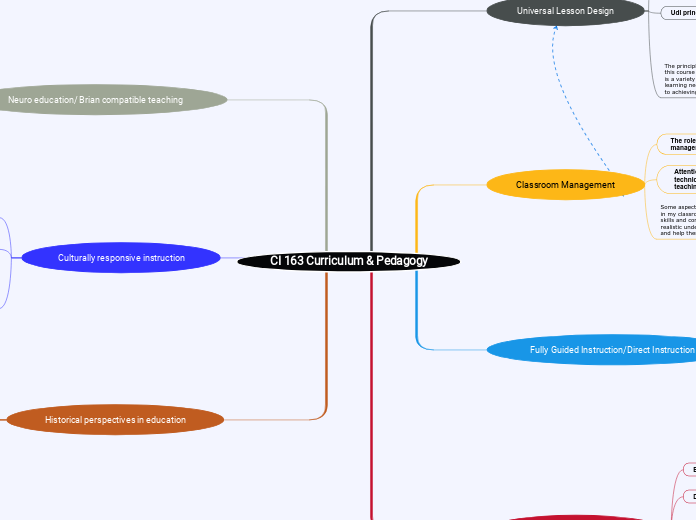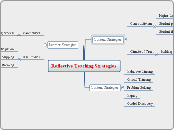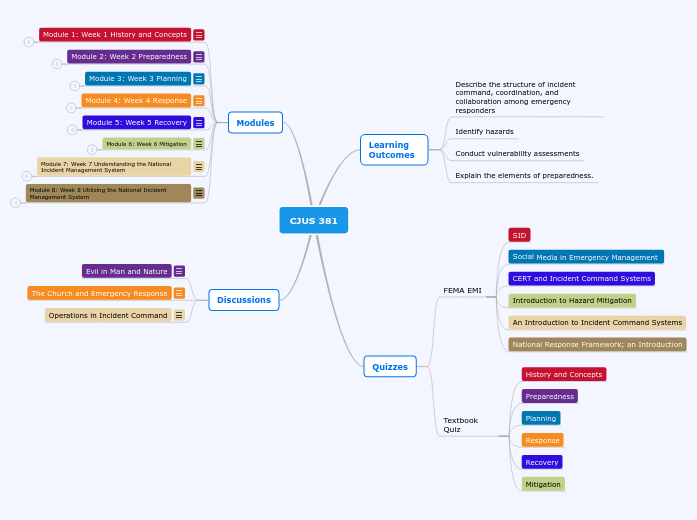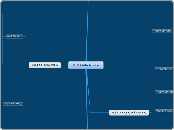CI 163 Curriculum & Pedagogy
The Solar System is the gravitationally bound system of the Sun and the objects that orbit it, either directly or indirectly. Of the objects that orbit the Sun directly, the largest are the eight planets, with the remainder being smaller objects, the dwarf planets, and small Solar System bodies.
Historical perspectives in education
Jupiter is a giant gas world that is the most massive planet in our solar system.
Its swirling clouds are colorful due to different types of trace gases.
And a major feature in its swirling clouds is the Great Red Spot, a giant storm more than 10,000 miles wide. It has raged at more than 400 mph for the last 150 years, at least.
Jupiter has a strong magnetic field, and with 75 moons, it looks a bit like a miniature solar system.
The historical perspectives in education made us get a broad understanding of the many topics of the importance of education reform, lesson design, classroom management skills and the development of a good teacher in the classroom.
A good teacher in every classroom
Jupiter has a strong magnetic field, and with 75 moons, it looks a bit like a miniature solar system.
Name the 4 most known moons.
Made us understand the importance of the great teacher characteristics a teacher should have and use in a classroom
Developing classroom management using RTI
How long does it take for Jupiter to go around the sun?
Brought a great understanding of how to establish great classroom management skills by the use of behavioral intervention strategies
Lessons of a century
A planet's day is the time it takes the planet to rotate or spin once on its axis.
Write down Jupiter's day measured in Earth days.
Help us understand the historical development of lesson design over the years
Sabertooth curriculum
Was based off of the importance of education reform of curriculum in the classroom
Culturally responsive instruction
Neptune is about the size of Uranus and is known for supersonic strong winds.
Neptune is far out and cold.
The planet is more than 30 times as far from the sun as Earth.
Neptune was the first planet predicted to exist by using math, before it was visually detected. Neptune is about 17 times as massive as Earth and has a rocky core.
I will incorporate culturally responsive instruction in my classroom by sharing stories that relate to the content and culture of students as a cultural responsive teaching method and giving students the opportunity of using participatory narrative inquiry for ethnographic studies.
Using participatory narrative inquiry (PNI) for ethnographic study
A planet's day is the time it takes the planet to rotate or spin once on its axis.
Write down Neptune's day measured in Earth days.
Help students discover insights, resolve conflicts and connect with students In a interpersonal level
Using storytelling as culturally responsive teaching
Is a great way to connect with classroom content and also connect with students cultural
Neuro education/ Brian compatible teaching
It was once considered a planet but in August 2006 the International Astronomical Union (IAU) downgraded the status of Pluto to that of “dwarf planet.”
Pluto is unlike other planets in many respects. It is smaller than Earth's moon; its orbit is highly elliptical.
It's a cold, rocky world with a tenuous atmosphere. Pluto is a very active ice world that's covered in glaciers, mountains of ice water, icy dunes, and possibly even cryovolcanoes that erupt icy lava made of water, methane or ammonia.
Some aspects of brain compatible teaching that I will incorporate into my classroomwill be the use of Menomic strategies to help to help students learning important information. Graphic organizers will be used to help strengthen students understanding of vocabulary and concepts by the use of visual representation.
Brain compatible instructional strategies
A planet's day is the time it takes the planet to rotate or spin once on its axis.
Write down Pluto's day measured in Earth days.
Refers to teaching methods, lesson designs and school programs that are based in factors of cognitive development on howstudents learn differently as they grow
Graphic organizers
How long does it take for Pluto to go around the sun?
Is known as a knowledge map or a concept diagram that is used as a pedagogical tool that uses visuals to express knowledge
Mnemonic strategies
A mnemonic is an instructional strategy designed to help improve students memory of information.
Critical/Higher level thinking
Mars is a cold, desert-like place covered in dust. This dust is made of iron oxides, giving the planet its iconic red hue.
Mars shares similarities with Earth: It is rocky, has mountains, valleys and canyons, and storm systems ranging from localized tornado-like dust devils to planet-engulfing dust storms.
The roles of blooms taxonomy and dok play in teaching is that both Frameworks are used to enhance the quality of student thinking by infusing higher level objectives in the teachings. The way I can apply blooms taxonomy is to help measure students instruction of materials, class objectives and applying cognitive rigor in the classroom. As for dok it helps me analyze the specifics in Frameworks of assignments.
Z chart for writing objectives
How long does it take for Mars to go around the sun?
A graphic organizer that helps students summarize information using linguistics and non linguistic representation
Depth of knowledge (DOK)
A planet's day is the time it takes the planet to rotate or spin once on its axis.
Write down Mars's day measured in Earth days.
Helps categorize task to the complexity of thinking required to successfully complete them.
Blooms taxonomy
Is a hierarchical model to classify educational learning objectives
Fully Guided Instruction/Direct Instruction
Earth is a water world, with two-thirds of the planet covered by oceans.
It's the only world known to harbor life.
Earth's atmosphere is rich in nitrogen and oxygen.
Its name originates from 'Die Erde,' the German word for 'the ground.'
Earth may once have had two moons, nowadays it has just one.
The benefits of lesson design using a fully Guided approach is a very effective to use in the classroom as it allows teachers to develop behavior objectives model student behavior, help students practice their everyday expectations and help teachers develop exit tickets to check for students understanding of the curriculum. Using this approach is to help us teachersvto identify students learning barriers in the classroom
Designing UDL lesson goals with flexible means
How long does it take for Earth to go around the sun?
Allows students to understand how difftools and resources support them in helping them obtain their lesson goals
Lesson development
A planet's day is the time it takes the planet to rotate or spin once on its axis.
Write down the Earth's day in hours.
Helps establish learning opportunities for students to achieve their learning objectives
Writing behavior objectives
Is a learning outcome that gives direction to the learners experience and becomes the basis for student evaluation
Classroom Management
Venus is Earth's twin in size and has no moons.
Its surface has various mountains and volcanoes. Because of its thick, toxic atmosphere that's made of sulfuric acid clouds, Venus is an extreme example of the greenhouse effect. The average temperature on Venus' surface is 900 F (465 C).
Venus spins slowly from east to west, the opposite direction to most of the other planets.
The Greeks believed Venus was two different objects — one in the morning sky and another in the evening. Because it is often brighter than any other object in the sky, Venus has generated many UFO reports.
Some aspects of socioemotional learning that I will incorporate in my classroom is teaching students the social emotional skills and competencies. I will make sure students gain a realistic understanding of his/ her strengths and limitations and help them attain a consistent desire for self improvement.
Attention continuum and surface management techniques: Frameworks for maintaining the flow of teaching
A planet's day is the time it takes the planet to rotate or spin once on its axis.
Write down Venus's day measured in Earth days.
Helps teachers address disruptive behaviors without interrupting the classroom instruction
The role of socio emotional learning on classroom management
Is helpful to both students and teachers as it increases self awareness, academic achievement and positive behavior in the classroom
Universal Lesson Design
Mercury is the smallest, only a little bit larger than Earth's moon. Mercury has no moon.
It experiences dramatic changes in its day and night temperatures: Day temperatures can reach a scorching 840 F (450 C), which is hot enough to melt lead. Meanwhile, on the night side, temperatures drop to minus 290 F (minus 180 C).
It also has a very thin atmosphere of oxygen, sodium, hydrogen, helium, and potassium and can't break-up incoming meteors, so its surface is pockmarked with craters, just like the moon.
The principles of udl relate to each other and other aspects of this course as it provides us a better understanding that there is a variety of strategies and resources to help meet the learning needs in students and improve students accessibility to achieving academic success.
Udl principles
A planet's day is the time it takes the planet to rotate or spin once on its axis.
Write down Mercury's day measured in Earth days.
Action expression
Refers to the principle in providing students with a diverse way of expressing their understanding and skill development
Engagement
Refers to the flexibility inthe ways information is presented to students
Representation
Refers to the way content is presented to students
Barriers of traditional education
Our Solar System has eight “official” planets which orbit the Sun.
Each planet is at a different distance from the sun. Name its position.
Poverty
Conflict, insecurity and instability
Lack of resources
Climate change
Food insecurity









